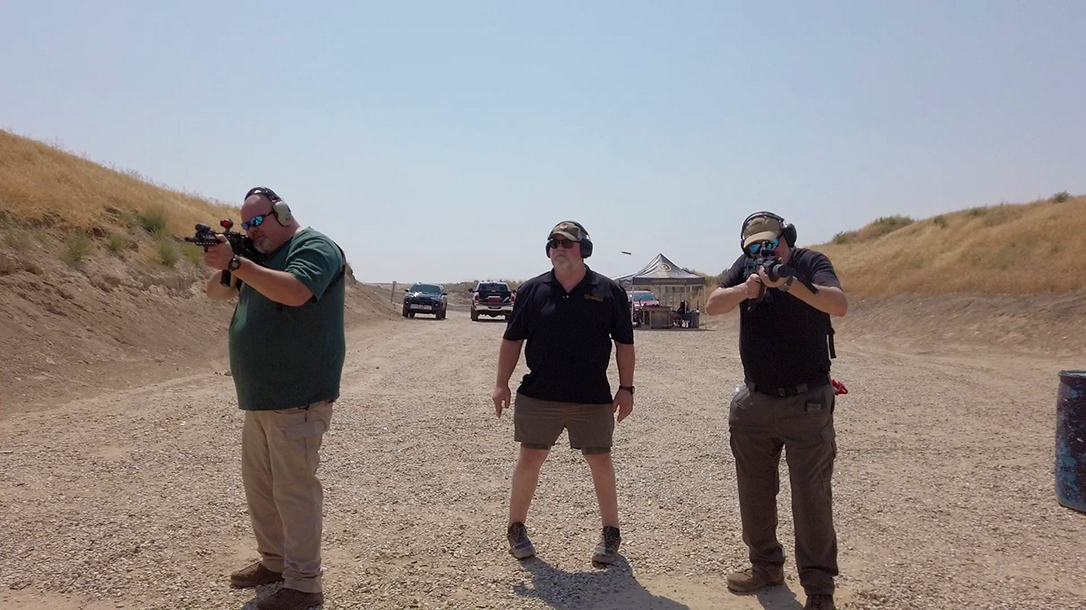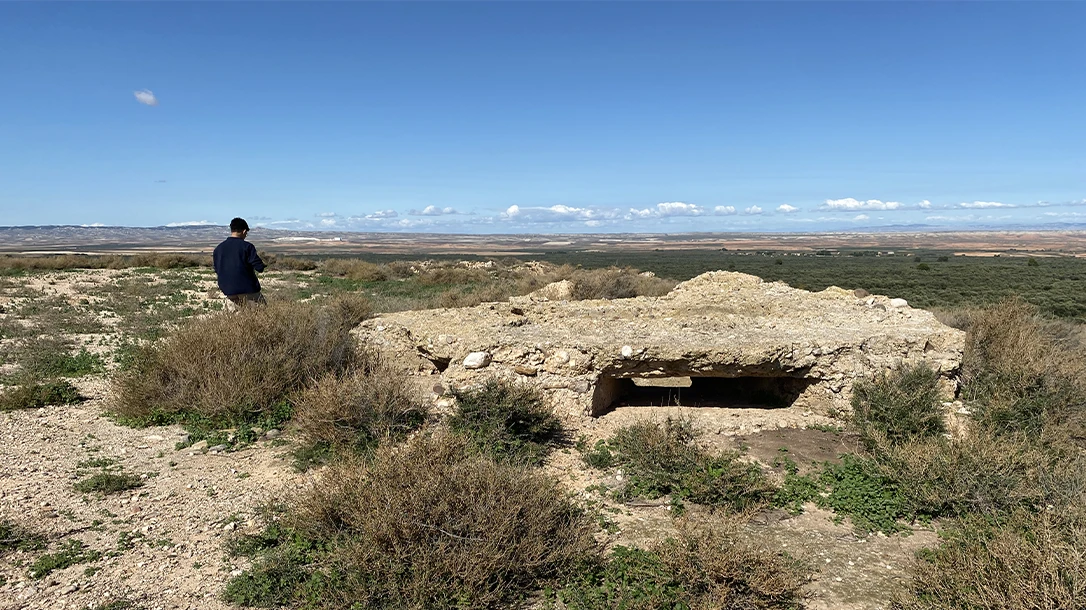Diamondback SDR Review: 21st Century Six Shooter

I hit the range with a Diamondback SDR in .357 Magnum to see how the Self-Defense Revolver really handles.
Diamondback has been in the manufacturing space for decades and producing their own firearms since 2009. A believer in American production, Diamondback Firearms brings groundbreaking designs to market (a 5.7mm PDW, the DB57, was featured on the cover of sister pub RECOIL Magazine Issue 53) in quantity and at prices people can afford.
Diamondback started their revolver journey a couple years ago with what many would consider a toy: the Sidekick series of .22 wheel guns. Instead of six rounds, they take nine. Instead of one caliber, they come with two cylinders (.22 LR and .22 WMR).
The folks at Diamondback took some lessons learned there to bring us their latest: the Self-Defense Revolver (SDR)
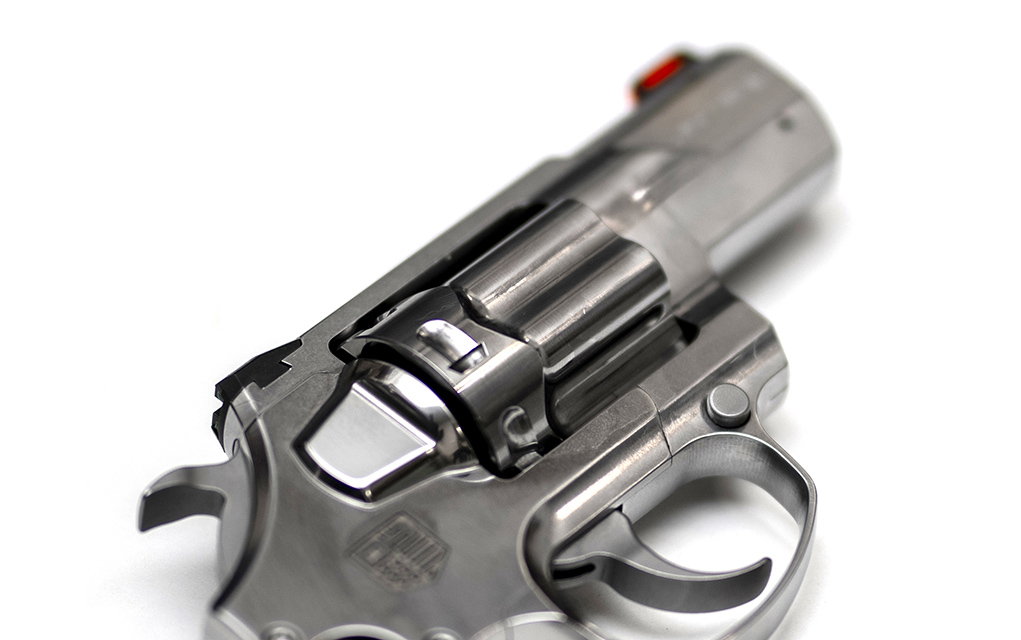
Diamondback SDR Specs:
Manufacturer: Diamondback
Model: SDR
Caliber: .357 Magnum
Weight Unloaded: 21.2 Ounces
Capacity: 6
Overall Height: 4.44 Inches
Barrel Length: 2 Inches
Overall Length: 6.53 Inches
Website: diamondbackfirearms.com
MSRP: $821
Details
In late 2021, lead designers Stuart Braudrick and Dave McCabe began sketching out their self-defense revolver concept. The SDR idea emerged from collaborative brainstorming; inspired by traditional wheel guns, but enhanced by modern innovation for performance and aesthetics. Since those early days, many team members at Diamondback have contributed to the refinement and success of the SDR.
The Diamondback SDR you see on these pages is technically a preproduction, but only just technically. There are no anticipated changes between our example and the one on the shelf in your local shop; the difference mostly comes down to ours not coming with a manual.
Firearms manufacturers often use code words. “Tactical” means that it comes in matte black or baby poop brown. Marketed to women? Shrink it and pink it. Self-defense? Ugly or unrefined, but with claimed reliability. The SDR has self-defense right in the name, but it’s far from crude.
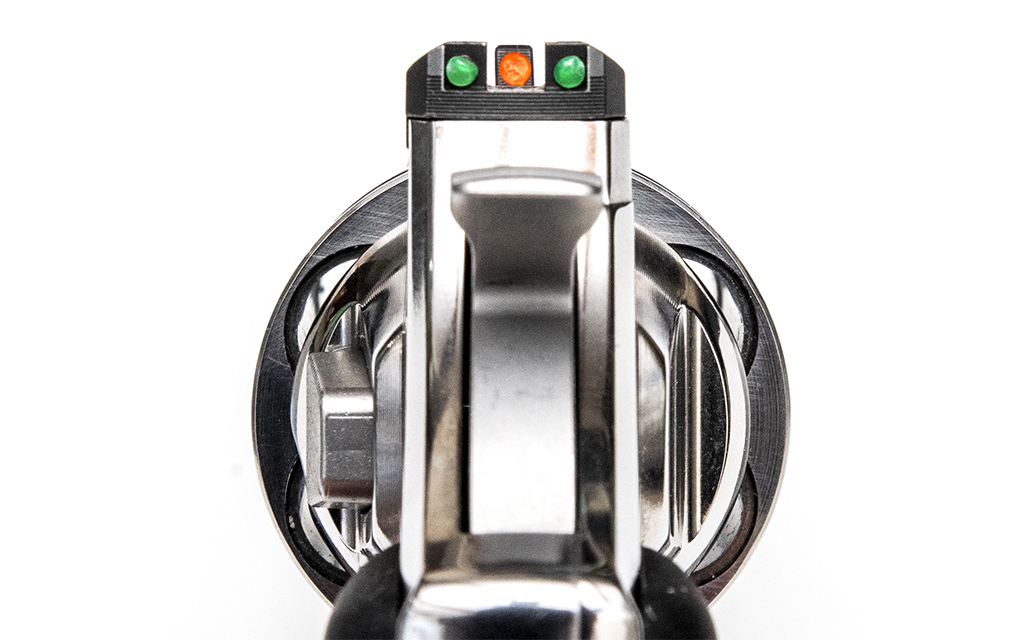

What is the Diamondback SDR? A gun that looks like a classic Smith & Wesson J-frame in the hand. But instead of five shots, there are six. Instead of .38 Special, it’s .357 Magnum. Instead of a basic blade sight, there are dovetailed fiber-optics.
The stainless-steel is smooth, beautiful, and highly polished (enough to make taking pictures of it a pain!). And it’s all finished off with a Diamondback-marked Hogue rubberized grip.
But if you don’t like Hogue, no worries. The Diamondback SDR is compatible with J-frame grips so you go as classy or as trashy as you’d like.


Trigger
The universal comment of the SDR while on the range was about how excellent the trigger is. Diamondback describes the trigger as match grade, but that’s underselling it—it’s downright indulgent. The trigger doesn’t stack; there’s no sudden weight increase at the end.
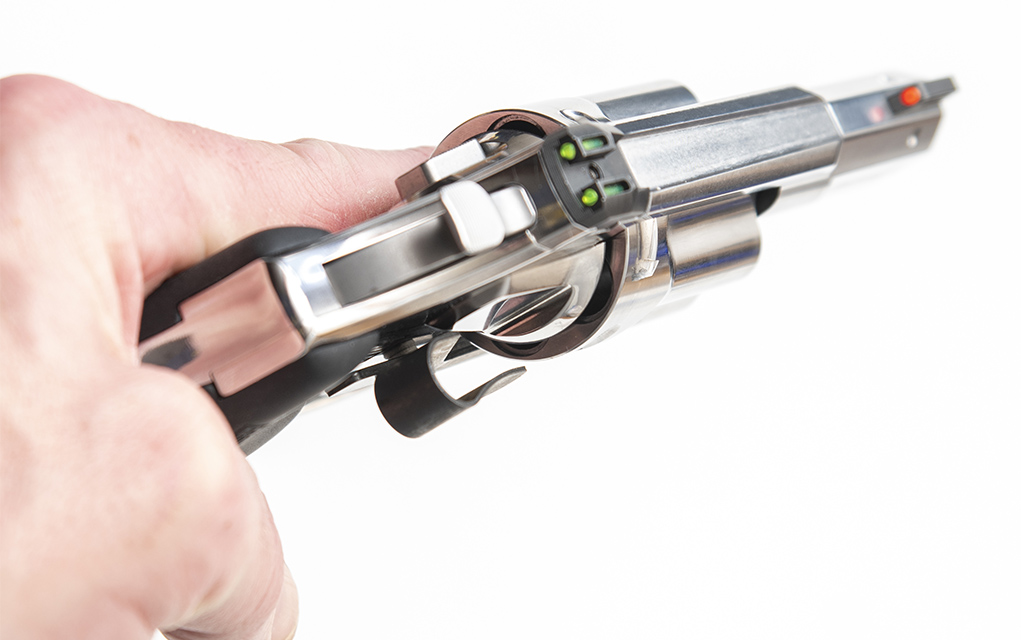

However, you can feel a “stop” before the break, not unlike a good Smith & Wesson trigger. It’s immediately recognizable and consistent. All told, the double-action pull is a smooth 10 pounds. If you thumb the hammer back for a single-action shot, you’re gifted with an extremely short (measured in the hundredths of an inch) pull that breaks just a hair under 3 pounds. The SDR might just be the best factory snubby trigger out of the box. You can do better, but you’ll have to go custom to do it.
Controls
One of the nice parts about developing something new is that you get to make some decisions. Controls can be a funny thing, and a great many debates have been had about push-versus-pull cylinder releases. Diamondback said screw those, and instead of copying Smith or Colt, we commend Diamondback for aping Ruger’s push-button release.
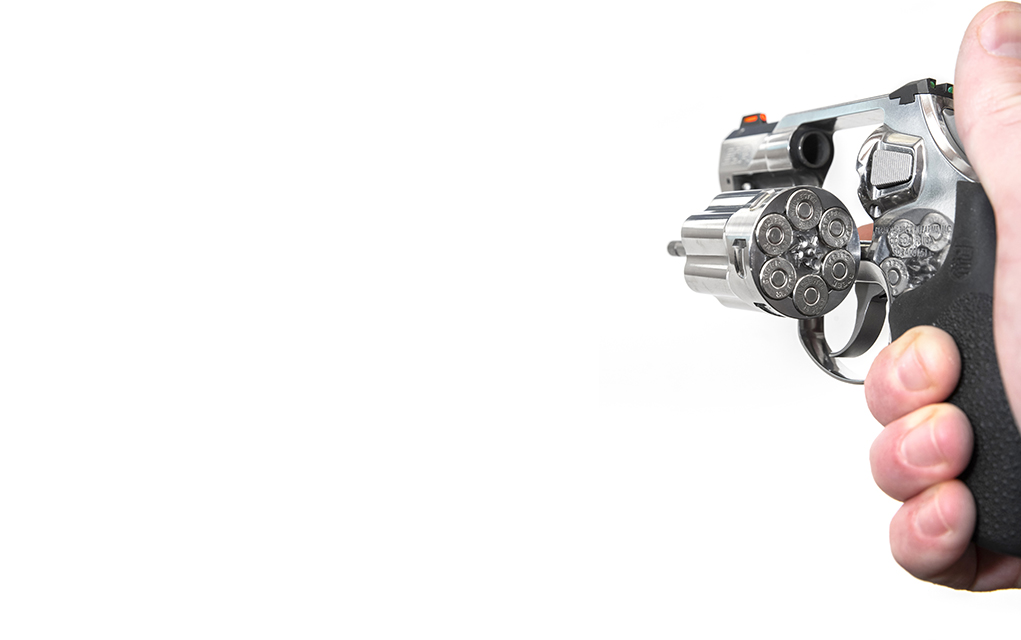

But there’s another curious button on the right side, just above and forward of the trigger. This one is for removing the cylinder entirely, a trick Diamondback learned with their Sidekick. While someday Diamondback may sell spare cylinders (we had visions of using them for rapid reloads just like on some 19th century single-actions), this is mostly for ease of cleaning and other maintenance.
As a nice note, with the cylinder not in place (either for reloading or removed), both the trigger and hammer lock up.
Caliber
The .357 Magnum was developed in the early 20th century essentially as a hot-rodded .38 Special. Because the newer .357 has more ass than the parent cartridge, the brass gained an extra eighth of an inch to prevent chambering in older guns. By nature of design, ammunition fired from revolvers performs under their potential; a great deal of gas escapes in the gap between the cylinder and barrel (and also the reason why revolvers, unless modified very particularly, are terrible with silencers).
To really see the advantages of .357 Magnum over .38 Special from a revolver, you need a barrel length of 4 inches or more. Or put another way, a barrel twice as long as the SDR. Granted, more is still more—but along with that marginal velocity increase from a short barrel, the flash and felt recoil also ramp up considerably.
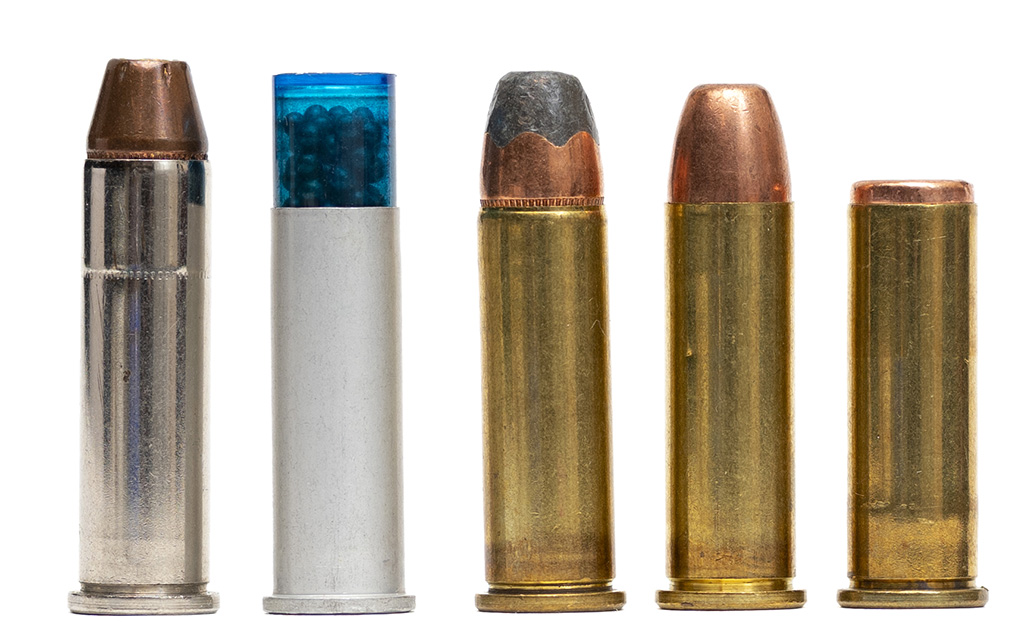

While the typical plan for a .357 revolver is to practice with .38 Special and carry the Magnum, here it’s probably best to carry a stout .38 +P round instead (but keep some .357 on-hand for range time with friends).
One of the advantages of revolvers in general is that the ammunition selection doesn’t matter as much in terms of function of the firearm. You can feed it everything from underpowered shotshells to supercharged magnums without complaint.
Diamondback SDR Holsters & Accessories
Holsters are a continual problem for new guns in general, but frankly it’s not so bad when it comes to revolvers. While you might get the Diamondback SDR into a Kydex or other thermoplastic holster mean for a five-shot .38 Special, you can definitely get one inside the great many leather options out there.


And even still, while we wouldn’t be the first ones to advocate for a clip-type holster for a semi-auto, it can be a different story when it comes to revolvers. While the trigger on the Diamondback SDR is incredibly smooth, it still takes a double-digit pull and a considerable amount of travel to touch it off when in double-action mode. Which is to say, these guns are much safer (rather than “safe”) than striker-fires inside the pants, purse or pocket even if the trigger ends up exposed.
While the SDR fits a great many things intended for the J-frame, the ClipDraw itself isn’t one of them because of dissimilar screw placement (though they have a universal with 3M adhesive—which might be worthwhile if you prep it properly). As the SDR accepts J-frame grips, other options include the DeSantis ClipGrip and the Barami Hip-Grip.
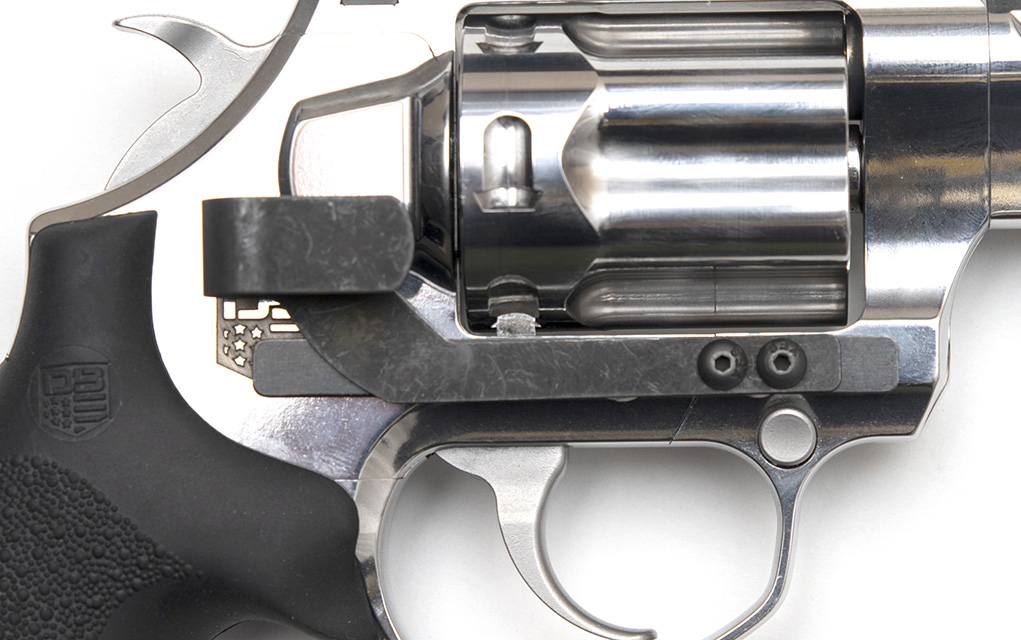

No, there are no provisions for weapon-mounted lights on this one. But yes, you can still get one in the form of weird grips like the Hyskore. Laser grips like Crimson Trace will also work but you may have to look elsewhere for ones that bolt to the frame.
If you’re not a fan of the fiber-optic sights, Diamondback has already been working with some aftermarket companies to increase your options. A little MRDS would be hot fire, and it certainly wouldn’t be difficult to make an adapter.
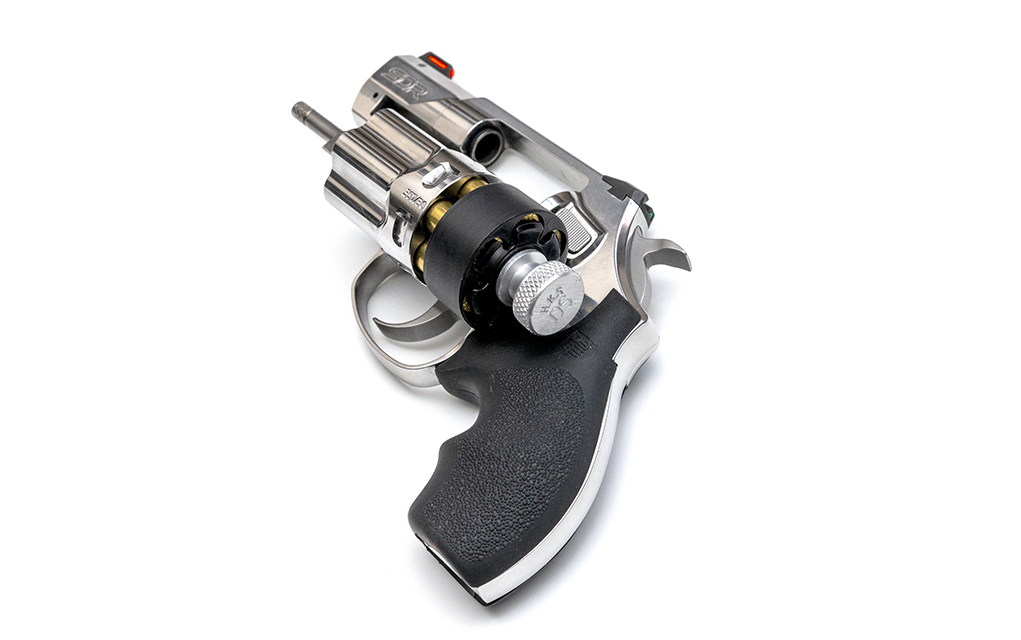

In terms of reloads, we know the cylinder swap is out (for now) but you still got options. You can use flat speed strips, which are great in the pocket but universally slow. For speedloaders, the HKS DS-A is compatible, as is the 5 Star D6-357/38, and the Speed Beez for the Kimber K6. Undoubtedly more as well, but these we can confirm.
The Future & Loose Rounds
The Diamondback SDR meets or exceeds everything you’d ask for in a snubby. There’s just something about a nice revolver, done right. The polished stainless steel of the SDR enhances the je ne sais quoi, and even the black rubberized grips in lieu of hardwood seem perfectly in place.
It’d be really great to see a factory dot option in the future, or at the very least an adapter. This gun is practically begging for a bobbed or concealed hammer model, especially with the slick-smooth double-action trigger. And although they don’t see as much use in the 21st century, an SDR with a barrel long enough to take advantage of .357 ballistics would be welcome, at least for those who want to play space-cowboy-future-Dirty-Harry, or the hunters among us.
When we asked about these features, Diamondback told us, “All of these are potentials. We are committed to making a name for ourselves in the revolver world, first with the Sidekick two years ago, and now with the SDR. We have no plans to stop.”
No plans to stop? Hot damn—we’re here for it.
Pros
- Amazing trigger
- Good Ruger-style cylinder release
- An overall well-made revolver
Cons
- Not optics-ready
- No bobbed hammer option
- No long barrel options
Diamondback SDR Deals
| Midway USA | $648 |   |
| Battlehawk Armory | $684 |   |
Editor’s Note: This article originally appeared in the August 2024 issue of Gun Digest the Magazine.
More On Revolvers:





